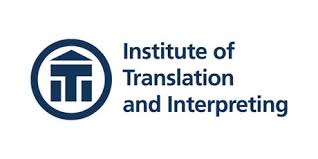AI has gained popularity in recent years, promising efficiency and speed, not to mention a cost-effective solution that meets various business needs. But is AI really as effective as many people claim? Let’s look at AI in the context of translation.

AI-powered translation tools pull resources from millions of different sources. The resources used by AI translation providers have not been checked or previously approved. AI uses sections of translated text and linguistic rules to piece together translations for its users.
The main strength of AI is that it can handle large volumes of simple and repetitive content quickly. It’s also seemingly a more budget-friendly solution. It struggles, however, with cultural context, subtleties, idioms, colloquialisms, humour and context-specific expressions. Only a human can add these essential touches.
If I were to write, ‘I drink from glasses because it’s better for the environment,’ an AI translation could render this in Welsh as ‘yfed o sbectol,’ which translates as ‘drinking from spectacles.’ If we were to ask AI to translate ‘let’s break the ice’ into Italian, it would produce ‘rompiamo il ghiaccio’, which translates literally as break the ice. A more appropriate translation in context would be ‘conosciamo meglio’ (let’s get to know each other better). If you translated ‘let’s get down to business’ into Spanish, the confusing translation would read ‘vamos a bajar al negocio’ or ‘let’s go down to the business’. This would leave your Spanish colleagues wondering where you were taking them. A more appropriate translation would be ‘manos a la obra’ or ‘empecemos a trabajar’.
Mistranslations can have serious consequences, especially in highly specialised fields such as medical and legal translation. A recent AI mistake in the US caused serious repercussions to asylum cases (read more about the case here), and the jury is still out on who is ultimately responsible for AI mistranslations.


There are also questions as to whether AI inherits biases from its training data, perpetuating harmful stereotypes and misinformation. In some languages, AI might interpret ‘job description: seeking a highly motivated individual’ as ‘job description: seeking a highly motivated man’. Only a human can pick up on such sensitive issues, and that’s why you should always have a professional linguist editing your documents.
AI certainly has a role to play in our ever-changing industry. It should complement human translation, not replace it. It is important to choose the right tool and team for the job to ensure clear, accurate and culturally appropriate communication.
Click here to find out how Business Language Services can help you strike the right balance between the cost-effectiveness and speed of AI and the expert human touch. Our AI services make use of cutting-edge machine translation technology, but you can rest assured that one of our expert linguists will scrutinise every word and nuance to ensure that the target content reads as well as the original.
For more information on our range of AI services, visit https://businesslanguageservices.co.uk/services/translation/
Author: Lizzie De Benedictis, Customer Relationship Manager

